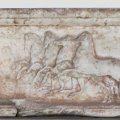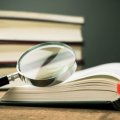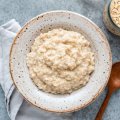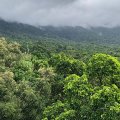Kung Fu fighters and calligraphy writers have more in common than meets the eye – and they will prove it at an unusual art gathering at The University of Queensland this month.
Dr Nat Yuen, a medical doctor, calligrapher and great grandmaster of kung fu, is the mastermind of a calligraphy exhibition which will formally open at the UQ Art Museum at St Lucia on Monday, October 1 and run until October 14.
To preview the show, Dr Yuen is calling on the martial artistry of his former kung fu protégée, Grandmaster Henry Sue, and his team from Brisbane’s Chinese Kung Fu Academy.
At a free community event at 2pm on Sunday September 30, they will hail the gentle art of calligraphy by breaking tiles, flourishing tai chi and kung fu weapons, sparring and staging a lion dance.
Dr Yuen, who introduced the Southern Shaolin Praying Mantis Kung Fu tradition to Australia when he was an international medical student at UQ in the 1960s, said kung fu and calligraphy were deceptively similar.
“Both martial arts and calligraphy are training of the body and the mind, each complementing the other,” said Dr Yuen, who lives in Hong Kong and will visit Australia for the community event and exhibition opening.
“Kung fu is the training of the physical body in the technique of fighting, and acceleration of body movement requires relaxation, concentration and reflexes.
“Calligraphy practice requires not only the art form of the words but also relaxation and concentration. It is a training of the mind, the body and hand movements.”
Dr Yuen’s own calligraphy will feature in the exhibition of more than 90 works, alongside works by Mr Wong Kwok Hing, and, importantly, the late Mr Lo Yat Ngam. Mr Lo was a venerable scholar and calligrapher who taught Dr Yuen and Mr Wong. Before his recent death at the age of 79 he was intending to visit Brisbane for the show, and in a sense this is his tribute exhibition.
UQ Vice-Chancellor Professor John Hay, AC, said the community event and the exhibition were made possible by Dr Yuen’s long-standing work to build ties between China and Australia, as a result of his years studying at UQ.
“Nat Yuen’s commitment to improved cultural relations is embodied in the exquisite Nat Yuen Collection at the UQ Art Museum, to which he has donated more than 80 Chinese antiquities,” Professor Hay said.
“This exhibition is a wonderful reminder that calligraphy, in the hands of great Chinese scholars, poets and painters, is an art form in itself – you don’t have to be able to read the text to appreciate the control and energy of the brushwork,” said Art Museum Director Nick Mitzevich.
“We have been delighted to work with Dr Yuen in bringing this collection of Chinese calligraphy to Brisbane so as to emphasise the important role calligraphy has played in Chinese culture and art,” Mr Mitzevich said.
While Dr Yuen’s kung fu practice dates to his school days, he began learning calligraphy some 12 years ago, adding to a tradition which has been interwoven with the literature and ethos of the Chinese for 3000 years. Kung fu is relatively young by comparison: Bodhidralma, the Shaolin monk who founded Zen Buddhism around the sixth century, meditated on Mount Zong behind the Shaolin Temple for nine years, and developed Shaolin Qigong which became part of kung fu training.
Dr Yuen graduated in Medicine from UQ in 1965 (as a classmate of UQ Chancellor, Sir Llew Edwards, AC) and was awarded a UQ Honorary Doctor of Medicine in 1995. He is an Honorary Fellow of the Royal Australian College of General Practitioners.
The exhibition’s formal opening on October 1 coincides with Chinese National Day.
The exhibition preview incorporating a program of martial arts and lion dancing will take place on Sunday, September 30 at 2pm.
Media enquiries: Peter Liddy from The University of Queensland Art Museum (07 3365 9782, p.liddy@uq.edu.au) or Fiona Kennedy at UQ Communications (07 3365 1088 / 0413 380 012, fiona.kennedy@uq.edu.au)
.jpg)



